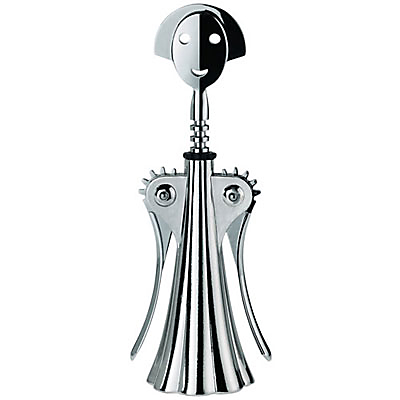Following the Linked Research presentations on Wednesday 9th February I’ve been reflecting on the styles of interaction design research and types of project that fit the identities of the researchers within our group. This is just an initial pass but might provide a starting point to look at some of the interests of diverse types of work and groups already doing things. Don’t feel constrained by these. I will also return to edit this post as I get more ideas and also to reflect some of Madeline’s References:
PaulIn some ways this is the toughest of all the presentations to map interaction design projects to. A key theme was the importance of the computer to your design practice. You also discussed the use of Building Information Management systems (BIMs) and design workflow. A set of project which do spring to mind are those of
Hiroshi Ishii and the
Tangible Media Group at
MIT Media Lab. They are famous for defining ‘Ambient Computing’ and well known for their work “mixing bits and atoms”. Some of the earliest work in this area was in collaboration with MITs department of Architecture.
Illuminating Clay is a project which allows Landscape Architects to naturally model in clay whilst a projector measures the surface height of the surface and project information back to the surface in issues like wind speed, light and shadow casting, moisture accumulation etc… This was followed up by projects like
CADcast and
Phoxel Space. There are some particularly interesting challenges in the area of architectural design and education in terms of mixing tangible objects and digital information. For interest also check out
Strata – I think you will like the aesthetic and the function.
Jennie
Health an education are really important to the study of interaction design so it’s hard to know where to start. You might want to look at Madeline’s work – particularly the stuff on
Subtle Stone – publications can be found here. Some of this work emerges from researchers like
Rosalind Picard who runs the
Affective Computing group at MIT Media Lab. We are very lucky to have
Prof Sugata Mitra at Newcastle University in the Education Department who has done quite inspirational things with computing and education in poor parts of India:
http://www.ted.com/talks/sugata_mitra_shows_how_kids_teach_themselves.htmlThe Digital Interaction group has done work with him before. In terms of health, at the scary end of this topic are projects like
chi+med which is investigating user interfaces for, potentially lifesaving (and thus also life threatening devices). Closer to home are projects like
User-centred Healthcare Design (USCHD).
Peter Wright is our contact for this – I hope you will get to meet him over the next few weeks. More generally I mentioned a Scandinavian type of design sensibility. There is a simplicity of use and material in work which comes from places like Sweden’s
Interactive Institute.
Michael
A few things to go at here. You want to make something. A good place to start might be the ‘Make’ community via
Make Magazine. This site is populated with amateurs who like to build things. Often they use found electronics or open source projects like
Arduino and
Processing. These are not usually research projects but give you an idea about what is possible with a soldering iron a bit of knowhow and some time. I was interested in your interest in procedural modelling and form creation. I’m not sure how we could facilitate this as I don’t do these sorts of projects and don’t know who does in Newcastle, however, from a research point of view I particularly like the methods and products of Neri Oxman. There is lots of stuff on her work and her group at MIT called ‘
Material Ecology’ has just been formed and her work can be found here. The really cool stuff for me lies in the mix between architecture and biology and particularly in the notion that we may program self generating biological materials in a world in which when you press the print button of your CAD drawing you’ll have the option to PRINT TO PDF // PRINT TO PLOTTER // PRINT TO DNA SEQUENCE…take a look at this video if you are interested…it might fit in to what we are doing…but I’m not sure yet + its much easier to program an arduino than a genetically engineer a new organism:
http://www.youtube.com/watch?v=nAMrtHC2Ev0Sticking closer to topic you might take a look at the work of another MIT group – the
Sensable Cities group. Their work emerges from the theories of
William J. Mitchell who was my PhD examiner and academic hero. He sadly died earlier this year but his ideas of cites which could sense themselves and create feedback loops of interaction remain in this group – and the projects are diverse.
Hanna
Your presentation immediately made me think of
Design Interactions department at the Royal College of Art. The RCA don’t make a clear distinction between Art and Design so their work tends to be at the cutting edge of a field known as design speculation. Their work isn’t just about digital technology but rather about designing experiences and revealing the pervasive influence of design on our lives through projects which are sometime playful, frightening, provocative and sometimes outright strange. Leaders in the field are
Dunne and Raby . Anthony Dunne wrote a book I’m fond of called
Hertzian Tales. A former RCA person is
Bill Gaver who also works in this area in the
Interaction Research Studio. Gaver is an important figure in Interaction Design and acts as a bridge between Design Speculation and more traditional technology development and studies in Human Computer Interaction. While the projects often verge on pieces of installation art and have a pared down aesthetic beauty which is a trademark of the group Gaver is also responsible for design methods such as Technology and Cultural Probes which are now used (and misused) extensively in design departments of large companies. Madeline has also followed up with a link or two to Fashion related projects but in the mean time this is a link to the
LilyPad Arduino which Madeline mentioned in relation to electronics which can be embedded into fabrics. In addition these are some groups which might be interesting in terms of lowtech and technology and fashion:
http://www.kobakant.at/http://www.xslabs.net/http://www.brunel.ac.uk/about/acad/sed/sedstaff/design/SharonBaurleyhttp://hlt.media.mit.edu/




















